
The Enchanting Wilderness of Šumava National Park
Discover the untouched beauty and diverse wildlife of Šumava National Park, Czechia's premier destination for outdoor adventure and serene landscapes.
Nestled in the heart of Czechia, Šumava National Park is a haven for nature lovers and adventure seekers alike. This expansive park is a part of the Bohemian Forest, which stretches across the border into Germany and Austria. Visitors will be captivated by its dense forests, serene lakes, and rolling hills. The park is home to a diverse array of wildlife, including deer, lynx, and various bird species, making it an ideal spot for wildlife observation and photography. Šumava National Park offers a plethora of activities for outdoor enthusiasts. Hiking and biking trails crisscross the park, providing visitors with endless opportunities to explore its natural beauty. During the winter months, the park transforms into a snowy wonderland, perfect for cross-country skiing and snowshoeing. There are also several picturesque villages within the park, where visitors can experience traditional Czech culture and hospitality. One of the highlights of Šumava National Park is the Vydra River, which flows through the park's rugged terrain, creating stunning waterfalls and rapids. The river is a popular spot for kayaking and rafting, offering an exhilarating way to experience the park's natural splendor. For those seeking a more peaceful experience, the park's many lakes and peat bogs provide a tranquil setting for relaxation and reflection.
Local tips in Šumava National Park
- Visit in different seasons to experience the park's changing landscapes and activities.
- Bring binoculars for bird watching and wildlife observation.
- Wear sturdy hiking boots, as some trails can be rugged and uneven.
- Explore local villages for authentic Czech cuisine and cultural experiences.
- Check weather conditions before planning your trip, especially in winter.
The Enchanting Wilderness of Šumava National Park
Nestled in the heart of Czechia, Šumava National Park is a haven for nature lovers and adventure seekers alike. This expansive park is a part of the Bohemian Forest, which stretches across the border into Germany and Austria. Visitors will be captivated by its dense forests, serene lakes, and rolling hills. The park is home to a diverse array of wildlife, including deer, lynx, and various bird species, making it an ideal spot for wildlife observation and photography. Šumava National Park offers a plethora of activities for outdoor enthusiasts. Hiking and biking trails crisscross the park, providing visitors with endless opportunities to explore its natural beauty. During the winter months, the park transforms into a snowy wonderland, perfect for cross-country skiing and snowshoeing. There are also several picturesque villages within the park, where visitors can experience traditional Czech culture and hospitality. One of the highlights of Šumava National Park is the Vydra River, which flows through the park's rugged terrain, creating stunning waterfalls and rapids. The river is a popular spot for kayaking and rafting, offering an exhilarating way to experience the park's natural splendor. For those seeking a more peaceful experience, the park's many lakes and peat bogs provide a tranquil setting for relaxation and reflection.
When is the best time to go to Šumava National Park?
Iconic landmarks you can’t miss
Castle Kašperk
Discover the enchanting Castle Kašperk, a historical gem in the Šumava region, offering stunning views, rich history, and endless hiking adventures.
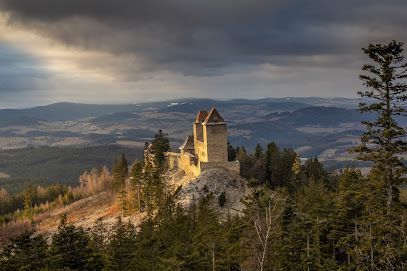
Vlčí výběh Srní (podívání zvenku)
Experience the stunning beauty of Vlčí Výběh Srní, a national forest in Šumava, perfect for nature lovers and outdoor adventures.
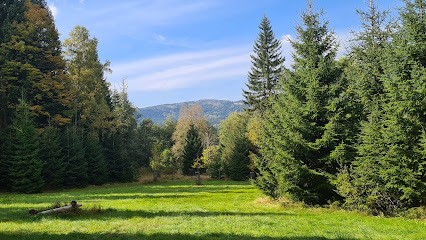
Chalupská slať
Explore Chalupská Slat', a serene peat bog in Šumava National Park, where nature's beauty meets ecological wonder in the heart of the Czech Republic.
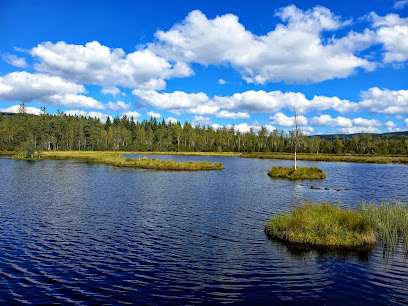
Jezerní slať
Experience the tranquil beauty of Jezerní Slat, a stunning natural reserve in the heart of the Czech Republic, perfect for nature lovers and outdoor adventures.
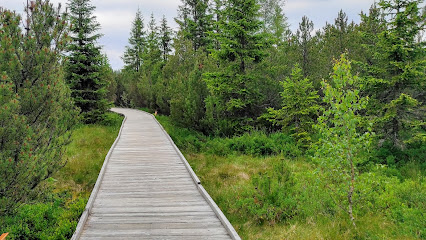
Hradlový most - Rechle
Discover the breathtaking Hradlový Most in Šumava, where nature meets history in a serene and picturesque landscape.
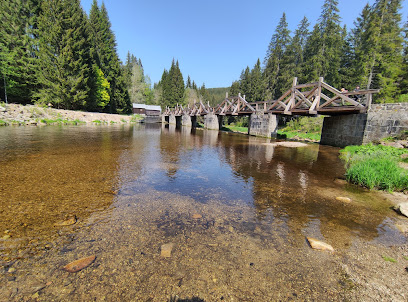
Čertovo jezero
Experience the breathtaking beauty of Certovo Jezero, a serene glacial lake in Šumava National Park, perfect for nature lovers and adventure seekers alike.

Boubínský prales
Explore the serene beauty of Boubínský Prales, a national forest in the Czech Republic, teeming with ancient trees and rich biodiversity.
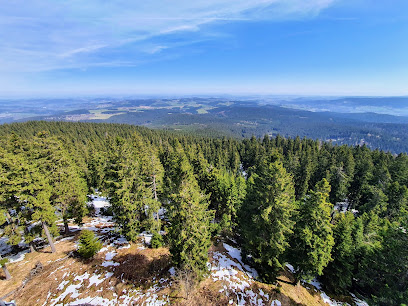
Tower Boubín
Discover the breathtaking vistas from Tower Boubín, an iconic observation deck in Buk-Prachatice, perfect for nature lovers and adventurers.
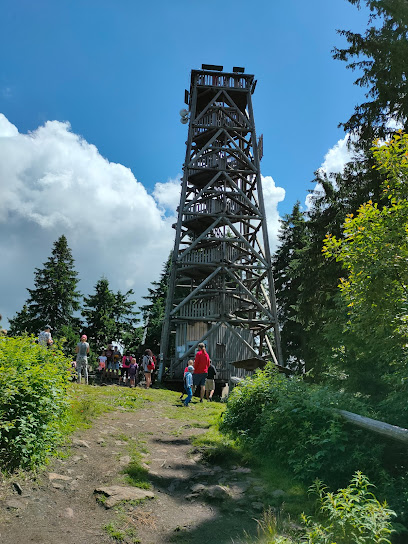
Prameny Vltavy
Explore the serene beauty of Prameny Vltavy, the source of the Vltava River, a stunning hiking area perfect for nature lovers.
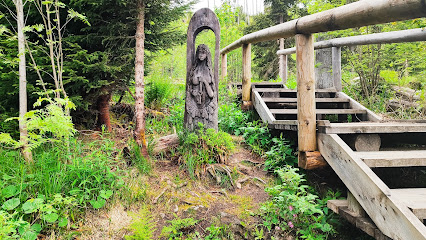
Soví voliéry Borová Lada
Explore the enchanting Owl Aviary in Borová Lada, a must-visit destination for bird lovers and nature enthusiasts in the stunning Šumava region.
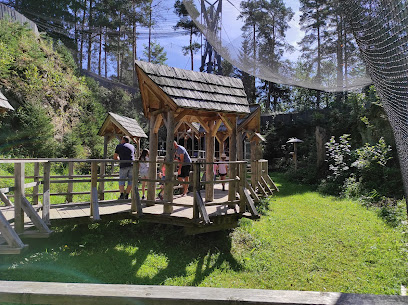
Poledník
Experience the majestic panoramic views at Poledník Observation Deck in Šumava National Park, a top destination for nature lovers and hikers alike.
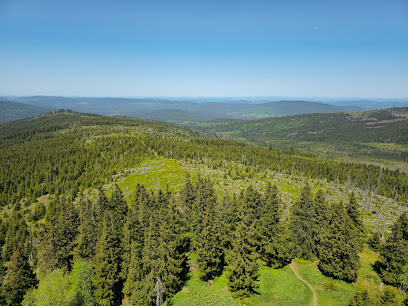
Jezero Laka
Explore the breathtaking beauty of Jezero Laka, a serene glacial lake surrounded by lush forests and stunning hiking trails in Šumava National Park.
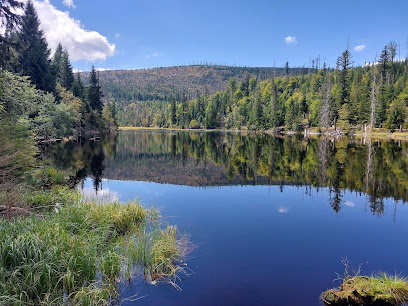
Trojmezná hora
Discover the breathtaking landscapes and diverse wildlife of Trojmezná Hora, a nature preserve perfect for outdoor adventures and serene escapes.
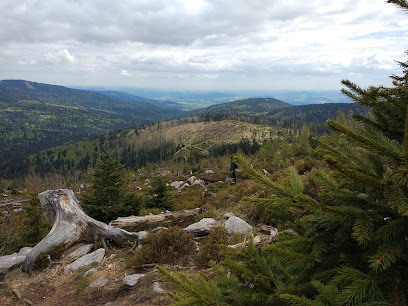
Bílá strž
Discover the natural beauty of Bílá strž National Forest, a hidden gem perfect for outdoor enthusiasts and nature lovers in Hamry-Nýrsko.
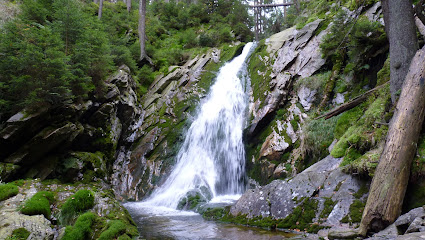
Soumarské rašeliniště
Experience the serene beauty of Soumarské rašeliniště, a national forest teeming with diverse wildlife and breathtaking landscapes in the Czech Republic.
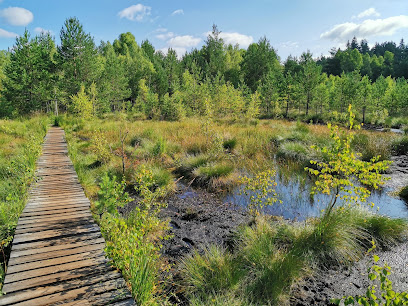
Unmissable attractions to see
Castle Kašperk
Discover the historical charm and breathtaking views at Castle Kašperk, a stunning medieval fortress nestled in the heart of the Šumava National Park.
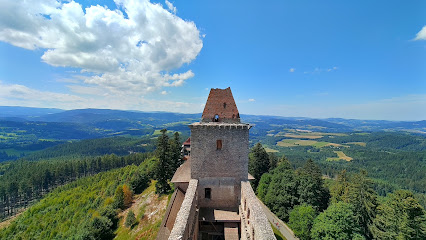
Vlčí výběh Srní (podívání zvenku)
Explore the stunning Vlčí Výběh Srnní, a national forest filled with diverse wildlife, breathtaking trails, and captivating exhibits on wolves.

Chalupská slať
Discover the serene beauty of Chalupská Slat, a unique peat bog in Šumava National Park, perfect for nature lovers and adventure seekers.

Jezerní slať
Experience the serene beauty of Jezerní Slat, a natural oasis in the Czech Republic, perfect for nature lovers and adventure seekers alike.
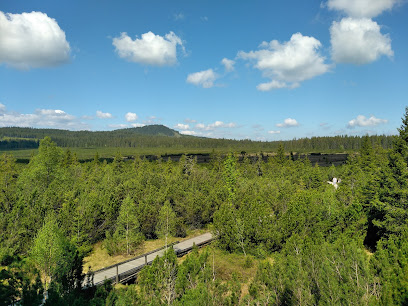
Hradlový most - Rechle
Discover the natural beauty and architectural charm of Hradlový Most - Rechle, a must-see pedestrian bridge in the Czech Republic's breathtaking landscape.

Boubínský prales
Explore the untouched beauty of Boubínský Prales, a national forest in the Czech Republic, perfect for nature lovers and adventure enthusiasts.
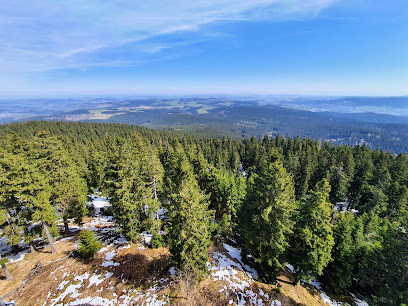
Tower Boubín
Experience breathtaking views and serene hiking trails at Tower Boubín, a stunning observation deck in the heart of the Czech wilderness.
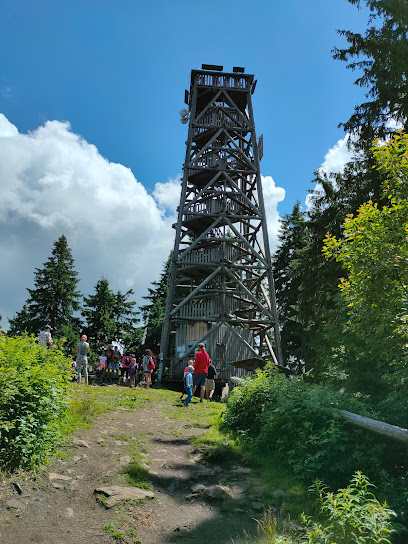
Prameny Vltavy
Discover the serene beauty at Prameny Vltavy, the enchanting source of the Vltava River in Kvilda-Vimperk, a perfect escape for nature lovers and hikers.
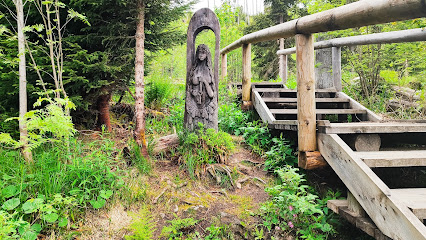
Soví voliéry Borová Lada
Explore the charming Owl Aviaries in Borová Lada, a haven for nature lovers and wildlife enthusiasts amidst stunning Czech landscapes.
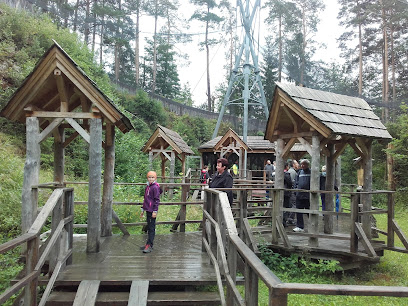
Poledník
Experience the stunning vistas and natural beauty of Poledník, a top hiking and observation destination in the Czech Republic's Šumava National Park.
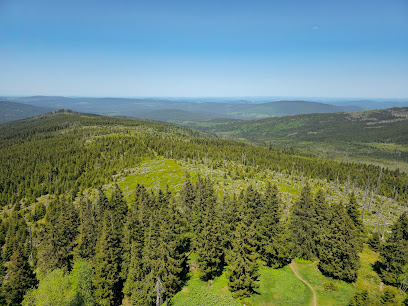
Soumarské rašeliniště
Explore the breathtaking natural beauty and unique ecosystems of Soumarské rašelinště in the heart of Šumava National Park.
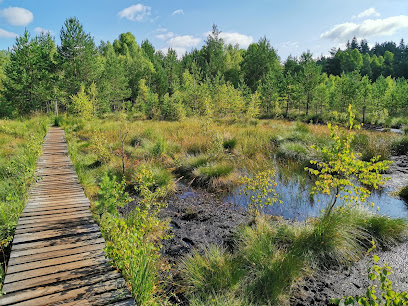
Klostermanova tower
Experience breathtaking views and nature's beauty at Klostermanova Tower in Šumava, a must-visit destination for every traveler.
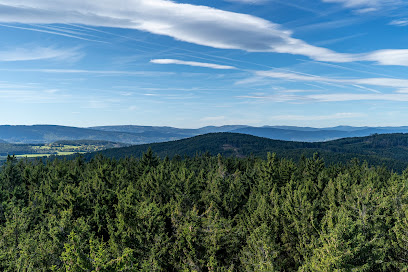
Sušice Museum of Šumava
Explore the Sušice Museum of Šumava, where history, culture, and nature converge in the stunning Šumava region of the Czech Republic.
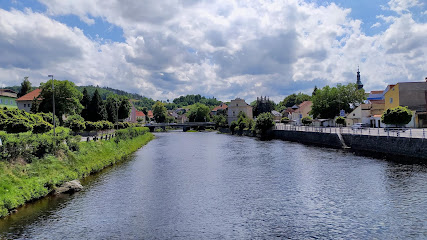
tower Javornik
Experience breathtaking views and serene nature at the Tower of Javornik, a stunning Czech tourist attraction in the heart of Šumava Mountains.
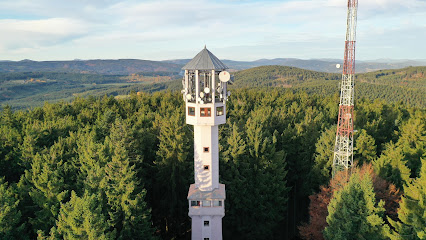
Museum Dřevák
Discover the cultural heritage of Modrava at Museum Dřevák, a captivating attraction showcasing the Šumava region's rich history and natural beauty.
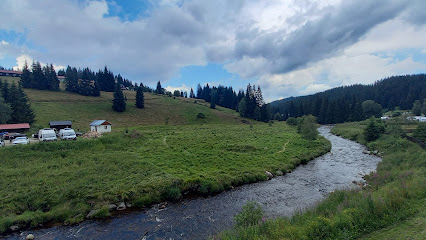
Essential places to dine
Šumava National Park
Discover the breathtaking beauty of Šumava National Park—an outdoor paradise filled with lush forests, tranquil lakes, and diverse wildlife.

Restaurace U Šumavy
Discover authentic Czech cuisine at Restaurace U Šumavy in New Town, Prague – where tradition meets modern culinary excellence.
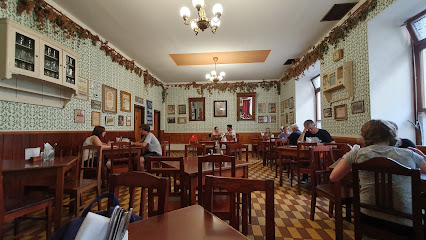
Hotel & Restaurace Šumava
Discover comfort and culinary delights at Hotel & Restaurace Šumava in beautiful Železná Ruda.
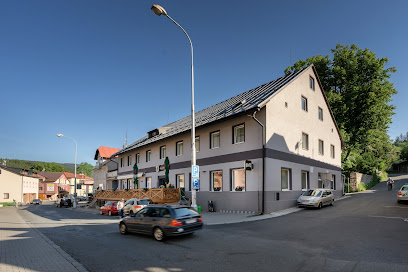
Divoký Bistro
Experience authentic Czech cuisine at Divoký Bistro in Šumava, where local ingredients meet traditional flavors in a charming setting.
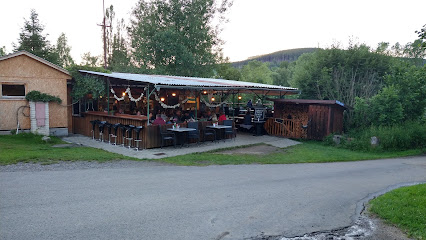
Restaurace Šumava Inn
Experience authentic Czech flavors at Restaurace Šumava Inn in Kvilda – where tradition meets modern comfort amidst breathtaking nature.
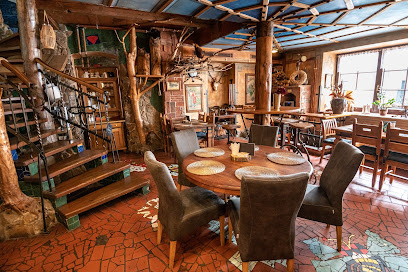
HOTEL & RESTAURANT ŠUMAVA
Experience unparalleled comfort and exquisite dining at Hotel & Restaurant Šumava in beautiful Vyšší Brod, Czech Republic.

Markets, malls and hidden boutiques
Šumava National Park
Experience the breathtaking landscapes and rich biodiversity of Šumava National Park, a natural gem in the heart of the Czech Republic.

Travel Free Shop
Explore the vibrant Travel Free Shop in Železná Ruda for unique local products, delightful souvenirs, and an unforgettable shopping experience.
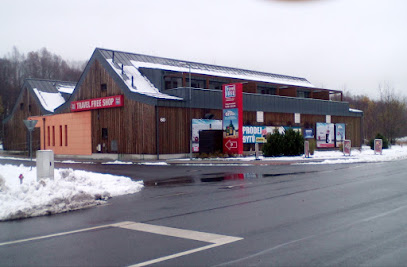
Bakery and Brewery Kvilda Ltd.
Explore the delightful tastes of Bakery and Brewery Kvilda Ltd., where fresh pastries meet expertly crafted brews in a charming village setting.
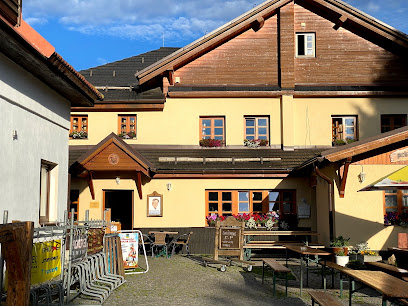
Travel FREE
Experience the best of shopping and local culture at Travel FREE in Strážný, Czech Republic, where every visit is a delightful adventure.
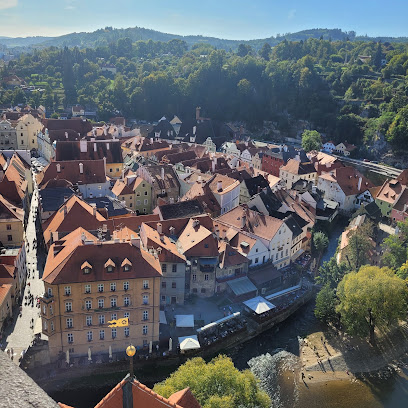
Návštěvnické centrum Kvilda
Explore the beauty of Šumava National Park at Návštěvnické Centrum Kvilda, your perfect starting point for adventure in nature.
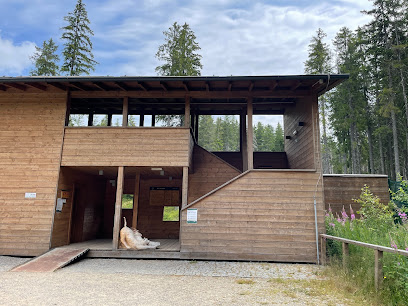
STOP SHOP
Discover the ultimate shopping experience at STOP SHOP in Hranice, where local charm meets modern retail in a vibrant atmosphere.
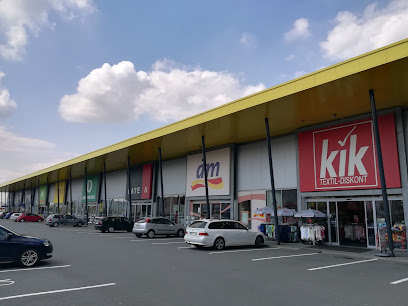
Boutique hotel Nebespán
Discover the charm of Boutique Hotel Nebespán, a perfect blend of comfort and adventure in the heart of Kašperské Hory.

Café Na Soutoku
Discover the serene charm of Café Na Soutoku, a delightful coffee shop in Modrava that offers exquisite brews and a peaceful escape in nature.
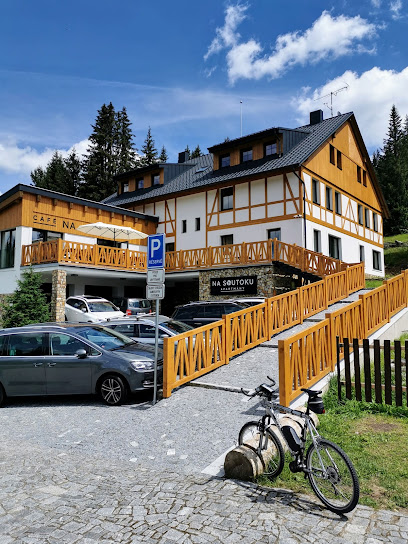
STOP SHOP Ústí nad Orlicí
Explore STOP SHOP Ústí nad Orlicí - a vibrant shopping mall offering diverse retail, dining, and entertainment options for every visitor.
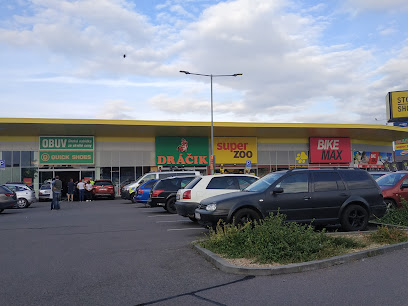
STOP.SHOP. Zatec, s.r.o.
Explore a diverse shopping haven at STOP.SHOP. Zatec, where local charm meets modern retail therapy in the heart of Žatec.

Smíšené Zboží Nahodilová Jaroslava
Explore the local flavors of Kvilda at Smíšené Zboží Nahodilová Jaroslava, your one-stop grocery store for authentic Czech products and delightful surprises.
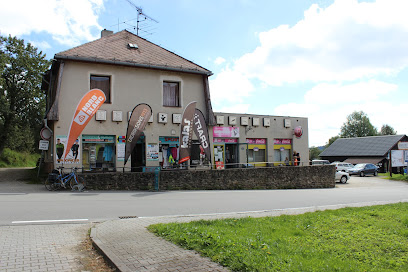
Freeoneshop Strážný
Explore Freeoneshop Strážný for unique souvenirs and local products, capturing the spirit of your travel experience in the heart of Strážný.
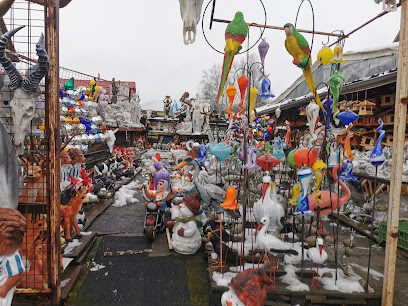
Maxi HIT
Explore Maxi HIT in Vimperk II for a stylish shopping experience filled with diverse clothing options for all ages and tastes.
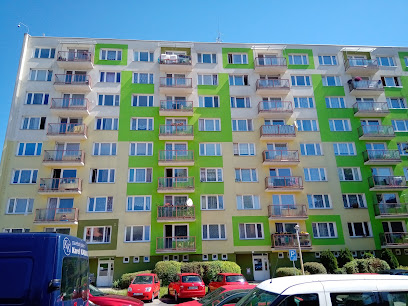
Keramika-sklo „U kocoura“
Explore the enchanting world of Czech glass art at Keramika-sklo „U kocoura“, a must-visit glassware store in Lenora-Volary.
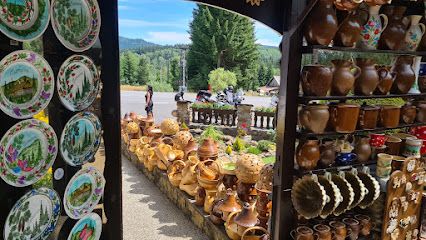
Hračky U Krtečka
Explore Hračky U Krtečka in Vimperk for a delightful selection of toys, gifts, and local crafts, making it the perfect stop for families and tourists.
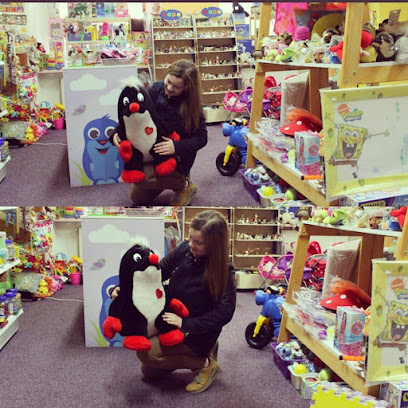
Essential bars & hidden hideouts
Penzion Panský dům
Experience the tranquility of Penzion Panský dům in Kvilda, where rustic charm meets the stunning landscapes of Šumava National Park.
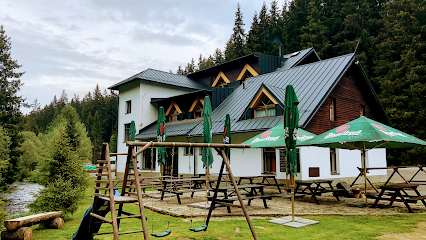
Restaurace Šumava Inn
Discover the flavors of Czech cuisine at Restaurace Šumava Inn, a perfect blend of tradition and comfort in the heart of Kvilda.
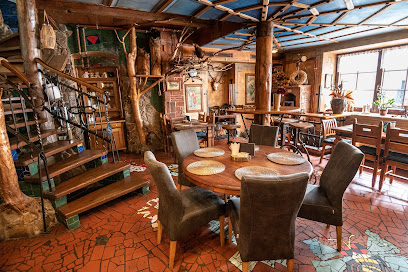
Hostinec Štampach
Discover the heart of Czech culture at Hostinec Štampach, a charming pub in Stachy serving traditional cuisine and local brews.
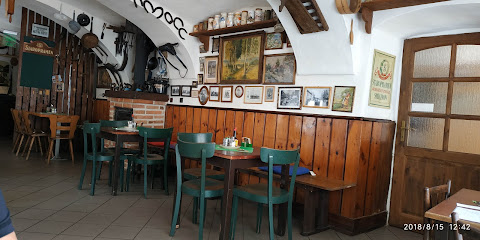
Šumavský pivní vokno
Experience the authentic flavors of Czech cuisine and local brews at Šumavský pivní vokno in beautiful Dobrá.

Hostinec Pod Zámkem - Na Koreji
Enjoy authentic Czech cuisine and local brews at Hostinec Pod Zámkem - Na Koreji, the perfect pub experience in Vimperk.
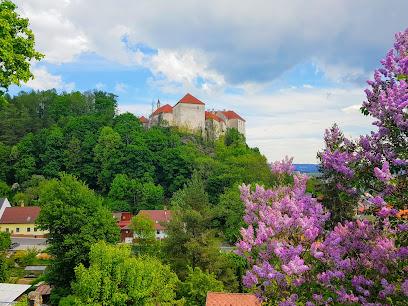
GRILL BAR LOTTE
Discover exquisite grilled dishes and a vibrant atmosphere at Grill Bar Lotte in Vimperk II, a must-visit for every food enthusiast.
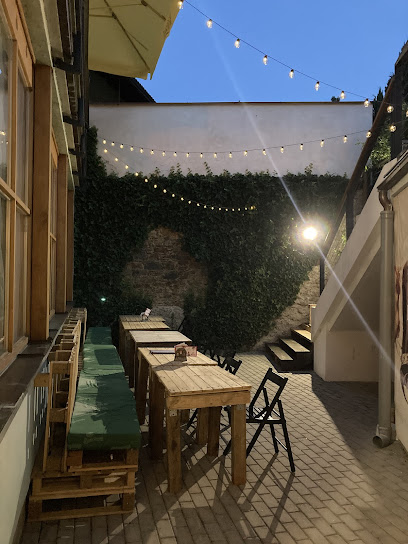
Music bar
Discover the lively Music Bar in Vimperk II, where vibrant music and delightful drinks create unforgettable nights.
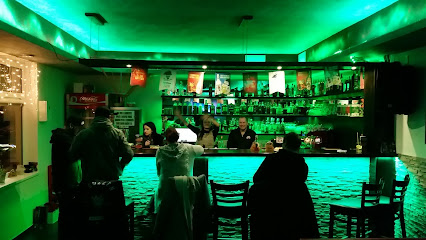
Restaurace U Radnice
Experience the authentic flavors of Czech cuisine at Restaurace U Radnice, a charming restaurant and pub in the heart of Stachy.
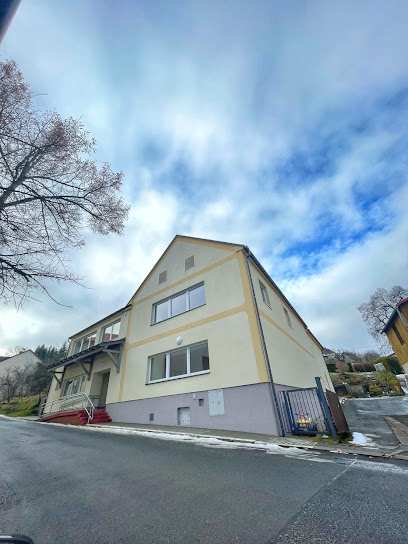
The Door Vimperk
Experience the charm of The Door Vimperk, where local flavors and a cozy atmosphere create unforgettable dining moments.
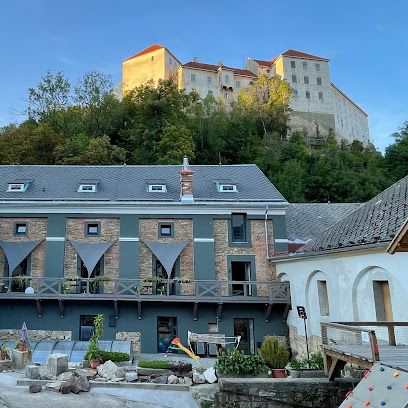
Blázinec u Draka
Discover authentic Czech flavors at Blázinec u Draka, a cozy pub in Hrabice with local brews and delicious traditional dishes.
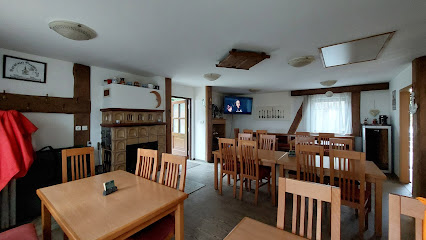
Bar U Štětce
Experience the heart of Vimperk at Bar U Štětce, where local beers and a cozy atmosphere create unforgettable moments.
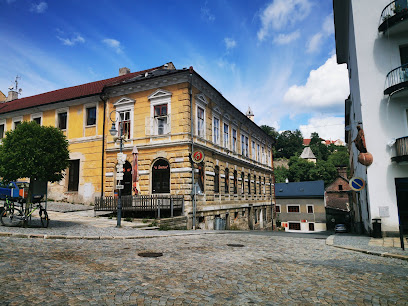
hospoda u Jeni
Explore the authentic charm of Hospoda u Jeni in Buk, where local beer and delicious cuisine come together in a warm, inviting atmosphere.
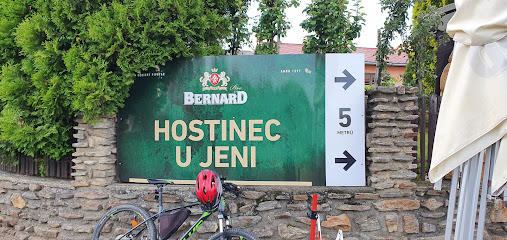
Pivnice Rafanda a studená kuchyně Vimperk
Experience the best of Czech cuisine and local brews at Pivnice Rafanda, a cozy pub in Vimperk perfect for tourists seeking authentic flavors.
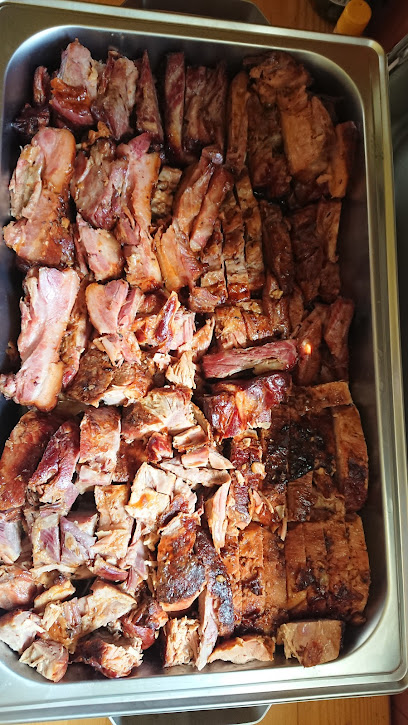
Fortuna Game, a.s.
Discover Fortuna Game, a.s. in Vimperk II – a lively bar offering local brews and a welcoming atmosphere for tourists and locals alike.
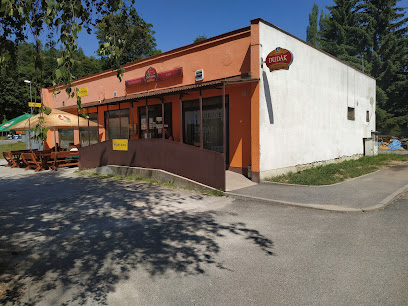
Autoškola
Experience the vibrant atmosphere and authentic local brews at Autoškola Pub in Vimperk, a perfect spot for relaxation and socializing.
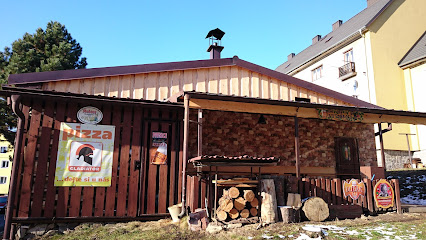
Local Phrases about Šumava National Park
-
- HelloAhoj
[ahoy] - GoodbyeNashledanou
[nah-shle-da-no] - YesAno
[ah-no] - NoNe
[neh] - Please/You're welcomeProsím
[pro-seem] - Thank youDěkuji
[dyeh-koo-yi] - Excuse me/SorryPromiňte
[pro-meen-te] - How are you?Jak se máš?
[yak se mash] - Fine. And you?Dobře. A ty?
[dobr-zhe. ah tee] - Do you speak English?Mluvíte anglicky?
[mloo-vee-te ang-leet-skee] - I don't understandNerozumím
[neh-ro-zoo-meem]
- HelloAhoj
-
- I'd like to see the menu, pleaseChtěl bych vidět menu, prosím
[chtel bikh vih-dyett menu, pro-seem] - I don't eat meatJá nejím maso
[yah ney-eem mah-so] - Cheers!Na zdraví!
[na zdra-vee] - I would like to pay, pleaseChtěl bych zaplatit, prosím
[chtel bikh zap-la-teet, pro-seem]
- I'd like to see the menu, pleaseChtěl bych vidět menu, prosím
-
- Help!Pomoc!
[po-mots] - Go away!Jdi pryč!
[ydee pri-tsch] - Call the Police!Zavolej policii!
[za-vo-ley po-lit-see] - Call a doctor!Zavolej doktora!
[za-vo-ley dok-toh-ra] - I'm lostZtratil jsem se
[ztra-teel ysem se] - I'm illJsem nemocný
[ysem ne-mots-nee]
- Help!Pomoc!
-
- I'd like to buy...Chtěl bych koupit...
[chtel bikh koh-pee-t] - I'm just lookingJen se dívám
[yen se dee-vam] - How much is it?Kolik to stojí?
[ko-leek toh stoh-yee] - That's too expensiveTo je příliš drahé
[toh yeh pri-lish dra-he] - Can you lower the price?Můžete snížit cenu?
[moo-zhe-teh snee-zheet tseh-noo]
- I'd like to buy...Chtěl bych koupit...
-
- What time is it?Kolik je hodin?
[ko-leek yeh ho-din] - It's one o'clockJe jedna hodina
[yeh yed-na ho-dee-na] - Half past (10)Půl jedenácté
[pool yed-nyant-seh] - MorningRáno
[ra-no] - AfternoonOdpoledne
[od-pol-ed-neh] - EveningVečer
[ve-cher] - YesterdayVčera
[v-che-ra] - TodayDnes
[dnes] - TomorrowZítra
[zee-tra] - 1Jedna
[yed-na] - 2Dvě
[dve] - 3Tři
[tree] - 4Čtyři
[tchee-ree] - 5Pět
[pyet] - 6Šest
[shest] - 7Sedm
[sedm] - 8Osm
[osm] - 9Devět
[de-vyet] - 10Deset
[de-set]
- What time is it?Kolik je hodin?
-
- Where's a/the...?Kde je...
[kde yeh] - What's the address?Jaká je adresa?
[ya-ka yeh a-dre-sa] - Can you show me (on the map)?Můžete mi ukázat (na mapě)?
[moo-zhe-te mee oo-ka-zat (na ma-pe)] - When's the next (bus)?Kdy jede další (autobus)?
[kdee yeh-de dal-she (au-to-boos)] - A ticket (to ....)Jedno jízdenka (do ....)
[yed-no yeez-den-ka (do)]
- Where's a/the...?Kde je...
History of Šumava National Park
-
The region of Šumava, also known as the Bohemian Forest, has been inhabited since prehistoric times. Archaeological findings suggest that Celtic tribes settled in this area around the 5th century BC. These early inhabitants left behind numerous artifacts, including tools and pottery, which provide a glimpse into their daily lives and culture.
-
During the medieval period, Šumava became an important religious and cultural center. The establishment of monasteries such as the Vyšší Brod Monastery in the 13th century played a significant role in the development of the region. These monastic communities were centers of learning, manuscript preservation, and agriculture, contributing to the spread of Christianity and literacy in the area.
-
Šumava was a crucial part of the trade route known as the 'Golden Path' (Zlatá stezka) during the Middle Ages. This route facilitated the exchange of salt, a highly valuable commodity, between the Bavarian city of Passau and the Czech lands. The bustling trade along the Golden Path spurred economic growth and cultural exchange, leaving a lasting imprint on the region.
-
From the 17th to the 19th centuries, Šumava was renowned for its thriving forestry and glassmaking industries. The dense forests provided ample timber, which was used for construction and fuel. The region's crystal-clear rivers and sand deposits were ideal for glass production, leading to the establishment of numerous glassworks. Šumava glass became famous for its quality and craftsmanship, and many of these glassworks operated well into the 20th century.
-
Šumava's strategic location along the German-Czech border made it a significant area during World War II. After the war, the region was heavily impacted by the establishment of the Iron Curtain, which divided Eastern and Western Europe. The border area was fortified, and many villages were abandoned. The presence of military installations and restricted zones shaped the landscape and accessibility of Šumava during the Cold War era.
-
In 1991, Šumava National Park was officially established to protect the unique natural and cultural heritage of the region. The park covers over 680 square kilometers and is one of the largest national parks in Central Europe. It encompasses diverse ecosystems, including dense forests, peat bogs, and glacial lakes. The establishment of the park marked a new era of conservation and sustainable tourism, ensuring that the natural beauty and historical significance of Šumava would be preserved for future generations.
Šumava National Park Essentials
-
Šumava National Park is located in the southwest of Czechia, near the borders with Germany and Austria. The nearest major cities are Prague, Plzeň, and České Budějovice. The best way to reach the park is by car, as it provides the most flexibility. You can also take a train from Prague to the towns of Sušice or Železná Ruda, which are gateways to the park. Buses are available from these towns to various points within the park.
-
Within Šumava National Park, walking and cycling are popular ways to explore the area. There are numerous well-marked trails for both activities. In addition, local buses operate within the park and can take you to different trailheads and points of interest. If you prefer more flexibility, renting a car is a good option. Remember that some areas may be restricted to motor vehicles to preserve the natural environment.
-
The official currency in Czechia is the Czech Koruna (CZK). Credit cards are widely accepted in hotels, restaurants, and larger shops within the towns surrounding Šumava National Park. However, it is advisable to carry cash, especially if you plan to visit smaller villages or more remote areas where card payment might not be available. ATMs can be found in larger towns like Sušice and Železná Ruda.
-
Šumava National Park is generally a safe destination for tourists. However, it is always wise to take standard precautions. Avoid leaving valuables in plain sight and be cautious in crowded areas. While there are no specific high-crime areas targeting tourists, always stay vigilant and aware of your surroundings. When hiking or cycling, ensure you are prepared with proper gear and inform someone of your plans.
-
In case of an emergency, dial 112 for immediate assistance. This number connects you to local emergency services, including police, fire, and medical assistance. It is also recommended to have travel insurance that covers medical emergencies. For minor health issues, there are pharmacies in the larger towns around the park. Additionally, park rangers and visitor centers can provide assistance and information.
-
Fashion: Do wear comfortable and weather-appropriate clothing, especially for outdoor activities. Avoid wearing overly flashy or expensive items. Religion: Do respect local customs and traditions, especially when visiting religious sites in nearby towns. Public Transport: Do be respectful and give up your seat to elderly passengers. Don't eat or drink on public transport. Greetings: Do greet people with a friendly 'Dobrý den' (Good day) or a simple 'Ahoj' (Hi). Eating & Drinking: Do try local delicacies and accept food offerings graciously. Don't refuse hospitality, as it is considered impolite.
-
To experience Šumava National Park like a local, consider visiting during the off-season for a quieter and more serene experience. Engage with local guides who can offer unique insights into the park's history and natural environment. Don't miss out on trying traditional Czech cuisine in local restaurants and pubs. Additionally, take the time to explore lesser-known trails and hidden spots for a more intimate connection with nature.
Nearby Cities to Šumava National Park
-
Things To Do in České Budějovice
-
Things To Do in Plzeň
-
Things To Do in Linz
-
Things To Do in Prague
-
Things To Do in Salzburg
-
Things To Do in Karlovy Vary
-
Things To Do in Hallstatt
-
Things To Do in Kutná Hora
-
Things To Do in Munich
-
Things To Do in Kitzbühel
-
Things To Do in Nuremberg
-
Things To Do in Zell am See
-
Things To Do in Hradec Králové
-
Things To Do in Bad Gastein
-
Things To Do in Brno












